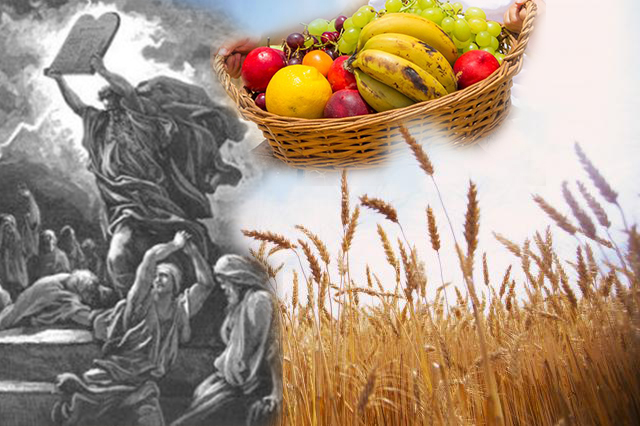A short explanation about ‘Shavuot Holiday’
Shavuot marks the giving of the Torah (Genesis, Exodus, Leviticus, Numbers and Deuteronomy) at Mt. Sinai, seven weeks after the exodus of the Israelites from Egypt. Indeed, Shavuot literally means “weeks” and is celebrated exactly seven weeks after the first day of Passover, which marks the exodus itself.
The celebration of Shavuot is specified in Exodus 34:22 and Deuteronomy 16:10. On Tuesday night, May 30, after festive evening prayers and a festive meal, many people will follow the custom of staying awake all night and studying religious texts, and then saying morning prayers at the earliest permitted time – thus expressing the enthusiasm of the Jewish people to receive the Torah. Most synagogues will organize special classes and lectures throughout the night of Shavuot. In Jerusalem, there is a widespread custom of going to the Western Wall – which will be exceptionally crowded – for Shavuot morning (Wednesday) prayers, often accompanied by dancing and singing.
The Shavuot morning prayers are marked by special hymns and scriptural readings, including the book of Ruth. Special memorial prayers for the departed are also said. Some communities maintain the custom of decorating their synagogues with green plants and flowers; this is in keeping with traditions that Mt. Sinai was a green mountain and that Shavuot is a day of judgment for fruit trees. On Shavuot, some hold the custom of eating dairy dishes; there are many explanations for this custom.
In ancient times, Shavuot marked the end of the barley harvest, and the beginning of the wheat harvest. Jewish farmers brought their first fruits to the Temple in Jerusalem (Deuteronomy 26:1-11), where special offerings were brought (Numbers 28:26-31). In honor of Shavuot’s status as the “Day of First Fruits” and the “Harvest Festival” (as it is referred to in Numbers 28:26 and Exodus 23:16, respectively), many villages in Israel, including kibbutzim and moshavim, also organize special celebrations revolving around these themes, including ceremonies in which new produce from the kibbutz or moshav is highlighted.
